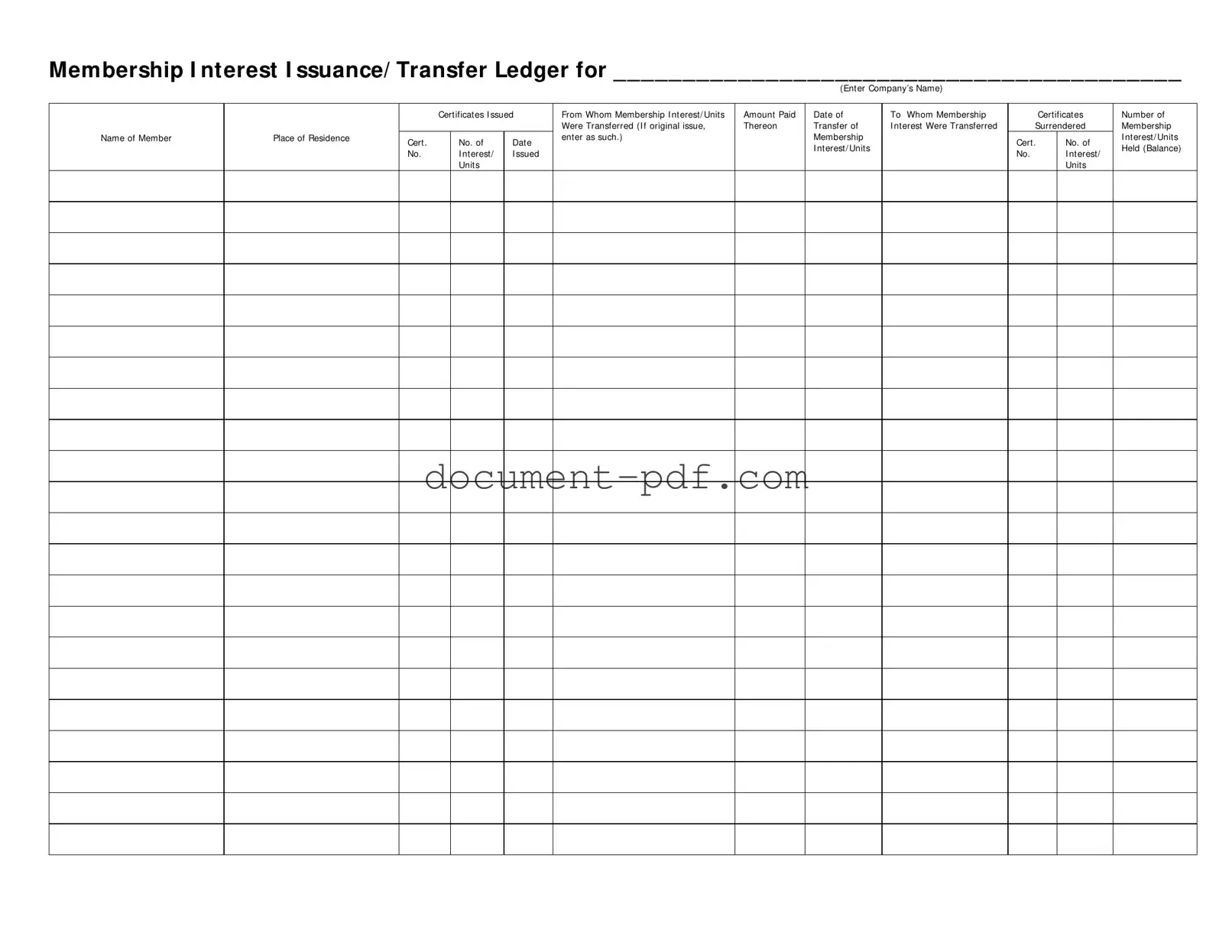The first document similar to the Membership Ledger form is the Stock Transfer Ledger. This ledger tracks the transfer of stock ownership from one party to another. Like the Membership Ledger, it records details such as the names of the parties involved, the number of shares transferred, and the date of the transaction. Both documents serve to maintain an accurate record of ownership and ensure transparency in the transfer process.
Another comparable document is the Certificate of Membership. This certificate represents an individual's ownership in a company or organization. It typically includes the member's name, the number of units or shares owned, and the date of issuance. Similar to the Membership Ledger, it provides proof of ownership and can be referenced when transferring interests or units.
Understanding the nuances of a comprehensive Power of Attorney document can significantly benefit individuals seeking to ensure their preferences are respected in various circumstances. This form designates someone to act on behalf of another, allowing for efficient decision-making when necessary. Its importance cannot be overstated, especially in contexts involving health or financial matters.
The Partnership Interest Ledger also shares similarities with the Membership Ledger. This document records the interests held by partners in a partnership. It details the contributions made by each partner, the percentage of ownership, and any transfers of interest. Both ledgers aim to keep track of ownership stakes and changes over time, ensuring all parties are informed of their rights and responsibilities.
The Member Registration Form is another document that resembles the Membership Ledger. This form collects essential information about members, such as their names, contact details, and the amount of their investment. While the Membership Ledger focuses on transactions and transfers, the Member Registration Form serves as an initial record of membership, laying the groundwork for future entries in the ledger.
The Ownership Transfer Agreement is also akin to the Membership Ledger. This legal document outlines the terms of transferring ownership from one party to another. It specifies the parties involved, the assets being transferred, and the conditions of the transfer. Both documents play crucial roles in documenting ownership changes, ensuring that all parties have a clear understanding of the transaction.
The Annual Membership Report bears resemblance to the Membership Ledger as well. This report summarizes the activities and financial status of the organization over the year, including membership changes. It provides a comprehensive overview of who holds interests and how those interests have shifted, paralleling the Membership Ledger's role in tracking ownership over time.
The Asset Register is another document that shares characteristics with the Membership Ledger. This register lists all assets owned by an organization, including membership interests. It includes details such as the value of each asset and any transfers that have occurred. Both documents serve to provide a clear picture of ownership and asset distribution within an organization.
Lastly, the Membership Agreement is similar to the Membership Ledger. This document outlines the terms and conditions of membership within an organization. It typically includes details about membership rights, obligations, and the process for transferring interests. While the Membership Ledger records actual transactions, the Membership Agreement establishes the framework within which those transactions occur.

